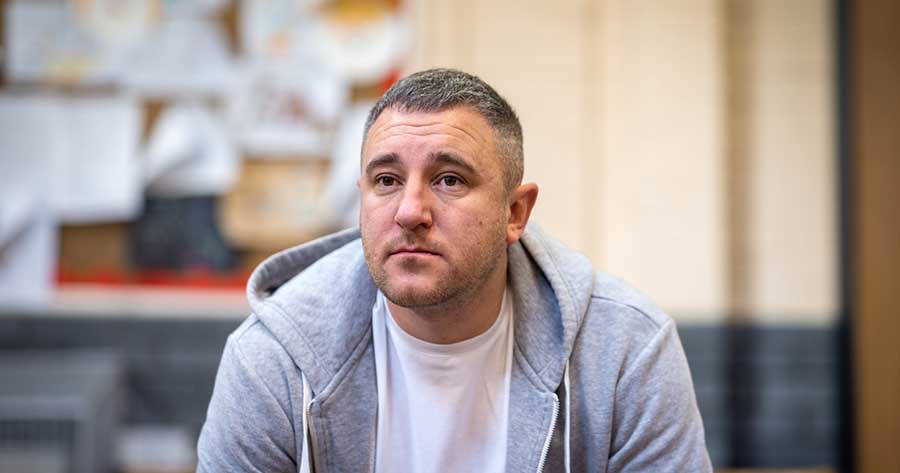Coronary heart disease (CHD) is the commonest cause of mortality in people with diabetes, especially in those aged over 40 years or in individuals whose disease duration exceeds 30 years (Krentz, 2000).
Over recent years, there have been major advances in the treatment of acute myocardial infarction (AMI), but both short and long-term mortality rates remain elevated in people with diabetes. However, large population studies have shown that it is not only patients with well-established diabetes that are at increased risk of CHD. People with impaired glucose tolerance and previously undiagnosed diabetes have a higher risk of CHD and greater long-term mortality than people who do not have diabetes (Fuller et al, 1983; Eschwege et al, 1985; Pyorala et al, 1985).
Hyperglycaemia is also associated with increased mortality in people with AMI. The DIGAMI (diabetes mellitus, insulin-glucose infusion in acute myocardial infarction) study demonstrated that treatment with an insulin-glucose infusion and long-term subcutaneous (s/c) insulin improved survival in such patients with or without previously diagnosed diabetes (Malmberg K et al, 1995; 1996; and 1997).
What was the DIGAMI study?
The DIGAMI study was a multicentre randomised controlled trial undertaken in 19 centres in Sweden (Malmberg 1995, 1996 and 1997). The purpose of the study was to assess the effects of intravenous (i.v.) insulin-glucose infusion on mortality. Patients with both known and unknown diabetes admitted with an AMI and a blood glucose level of more than 11mmol/l were given an i.v. insulin-glucose infusion for 24h. They were then transferred to a s/c basal bolus insulin regimen for at least 3 months. Controls only received insulin if there was a clinical need on account of poor glycaemic control.
The results from this study showed an improved survival rate in the study group that received the i.v. insulin-dextrose infusion and long-term s/c insulin compared with the control group who received the standard treatment. The greatest improvement was in the low risk/not previously insulin-treated group. This improvement in survival meant that for every nine patients treated with the DIGAMI criteria, one life was saved over 3 years.
Why did the DIGAMI regimen work?
Why the DIGAMI regimen was successful is uncertain. It may have been the combination of several interventions, for which the study was also criticised. It was also suggested that there might have been differences in the treatment of cardiovascular disease between the two groups, which would affect mortality outcomes. However, Malmberg (1995 & 1996) stated that there were no significant differences in treatments for cardiovascular disease between the two groups.
Nattrass (1997), amongst others, speculated that the higher survival rate of patients with tablet-treated diabetes in the study group might have been caused by the withdrawal of sulphonylureas as opposed to the introduction of long term s/c insulin treatment. There are experimental studies that suggest sulphonylureas might interfere with the heart’s natural protective mechanisms, and therefore result in more extensive myocardial infarctions.
Following the administration of the i.v. insulin/dextrose infusion, blood glucose levels were aggressively lowered over the first 4-6h of admission, which could have acted as a protective mechanism by reducing further ischaemic damage to the myocardium, as well as improving other metabolic factors.
At the present time, there are two ongoing studies (DIGAMI 2 and HEART 2D), which are trying to identify which intervention in the DIGAMI study was effective.
Our revised DIGAMI protocol
Following the publication of the 3 year DIGAMI results, a full-time DSN was employed to implement the findings of the DIGAMI study at the Leicester Royal Infirmary (LRI). This process involved a baseline audit to ascertain current practice in relation to the giving of i.v. insulin in the presence of hyperglycaemia after an MI in the coronary care unit (CCU). This audit revealed that very few patients who met the DIGAMI criteria were actually commenced on long-term insulin therapy (Garwood et al, 1998; Lawrence et al, 1998).
Following this baseline audit, the diabetes and cardiovascular teams at the LRI devised revised guidelines for the management of hyperglycaemia in patients presenting with an AMI, which also fitted in with local practice. The main differences from the regimen used in the DIGAMI study were as follows:
- The LRI protocol gave the i.v. infusions separately and used a variable rate insulin pump, rather than an insulin-dextrose infusion in the same bag.
- Hypoglycaemia was more frequent in the DIGAMI intervention group due to the intensive i.v. insulin-dextrose regimen, particularly in older patients. We therefore developed two insulin infusions for the LRI protocol: a less intensive regimen for people over 70 years old and a more intensive one for those aged less than 70 years old. Furthermore, the regimen for people aged less than 70 was switched to the regimen for those aged over 70 years overnight to reduce the risk of nocturnal hypoglycaemia.
- The LRI protocol also transferred patients to twice-daily s/c insulin, rather than the basal bolus regimen used in the DIGAMI study as this was the usual practice at the time. Furthermore, our patient group was older, and there were concerns over the acceptability of long-term insulin.
- The management of stress hyperglycaemia and previously undiagnosed diabetes was also modified. In the DIGAMI study, all of the intensively treated patients were commenced on long-term s/c insulin, whether they were known to have diabetes or not. Cardiologists were concerned about the risk of hypoglycaemia in this latter group of patients commencing s/c insulin. A compromise was agreed, which entailed the monitoring of blood glucose levels for 48h after stopping the i.v. infusion. If these patients were found to be hyperglycaemic during this period, then long-term s/c insulin was commenced. If they appeared to have normal glycaemic control, then a 75g oral glucose tolerance test was recommended 6 weeks after discharge from hospital.
Audit aims and objectives
During 2002, we did a repeat audit to determine whether current standards of care, as defined by the LRI CCU medical and nursing protocols from 1998, were being met, and to provide information for updating these protocols. We also examined patient outcomes, focusing on diabetes management and survival after an AMI.
Audit methods
Members of the diabetes team undertook a retrospective case note audit for the year 2001 on all patients (whether they were known to have diabetes or not) admitted to the CCU with a definite or proven MI and a blood glucose level of more than 11mmol/l. Patients were identified using the CCU database. An audit form was designed and piloted. Completed forms were scanned onto a formic database and analysed using Microsoft Excel by members of the clinical standards team.
Demographics
119 patients were identified as having a suspected or proven MI and an admission blood glucose of more than 11mmol/l. However, only 108 forms (107 patients) were completed as seven sets of case notes were missing and four patients were identified as not fulfilling the DIGAMI criteria.
Of these 108 patients, 52% (56) had type 2 diabetes, 3% (3) type 1 diabetes and 45% (49) were not previously known to have diabetes on admission. The median age was 69 years (range 39–95). The majority of the patients were male (68% [73]).
The original DIGAMI protocol was criticised for not including the site of the MI or the presence of left ventricular failure, as these were both factors that could have had an impact on patient outcomes. We therefore collected data on these variables.
All 107 patients were identified as having a definite MI and 67% (72) also had evidence of left ventricular failure.
Mortality
Of the 107 patients admitted to CCU who fulfilled the DIGAMI criteria, 37 (35%) patients died within 12 months (these patients may or may not have received an i.v. insulin/dextrose infusion on admission) See Figure 1.
Patients with type 2 diabetes fared the best during the initial admission with only 6 (11%) deaths, whilst patients in whom diabetes was unconfirmed or those with stress hyperglycaemia fared the worst, with 18 (37%) patients dying during admission. By 12 months, 12 (21%) patients with type 2 diabetes and 23 (47%) patients who were not known to have diabetes had died. There were only three patients with type 1 diabetes and two (66%) died during the initial admission.
We established five audit standards from the nursing and medical protocols on CCU for future practice.
Audit standards
Audit standard 1:
All patients with a suspected or proven MI should have a laboratory blood glucose test performed on admission to the Accident and Emergency Department/CCU.
594 patients were admitted to CCU during 2001 with a suspected or proven AMI. Eighty-one percent (481) of patients had a venous plasma blood glucose taken, which means that 19% did not, and it is thus possible that there were further patients who were hyperglycaemic.
Audit standard 2:
If the admission blood glucose level is more than 11mmol/l (whether or not it is known if the patient has diabetes) and the patient has a definite AMI, both an i.v. 5% dextrose and variable rate insulin infusion should be commenced and continued for at least 24h.
Of the 108 patients admitted to the CCU with a definite AMI and plasma blood glucose level of more than 11mmol/l, only 42% (45) were put onto an i.v. 5% dextrose and a variable rate insulin infusion. Of these, 71% (32) patients were known to have diabetes and 29% (13) were not known to have diabetes. The median duration of the infusions was 26h (range 1–91h).
The other insulin regimens we used were:
- LRI CCU protocol i.v. variable rate insulin infusion with no 5% dextrose infusion in 20 patients.
- LRI local i.v. variable insulin regimen with a 5% dextrose infusion in one patient.
- LRI local i.v. variable insulin regimen with no dextrose infusion in 17 patients.
- Twenty three patients received no i.v. insulin at all.
- A further two patients continued on their s/c insulin.
Encouragingly, 77% (83) of patients received some form of i.v. insulin on admission during the re-audit, which compares favourably to the 1998 baseline audit results when only a small number of patients received i.v. insulin (Garwood et al, 1998).
44% (37) of patients did not appear to have a dextrose infusion given alongside their i.v. insulin infusion, and this may have been due to the avoidance of fluid overloading as a large number of patients presented with LVF. The present LRI CCU protocol states that in the presence of LVF, a 10% dextrose infusion should be given at half the rate of 5% dextrose to avoid fluid overload in such patients.
Hypoglycaemia was an area of concern in the original DIGAMI study, as the intensively treated patients experienced a higher number of hypoglycaemic episodes than the control group. The results of our 2001 audit demonstrated that hypoglycaemia was not a major problem, with only 11 patients experiencing hypoglycaemia. A hypoglycaemic episode was recorded if the medical or nursing notes stated that the patient had had a hypoglycaemic episode or if a blood glucose level of less than 4mmol/l had been recorded. Nine patients had previously diagnosed diabetes and two were not known to have diabetes. However, it is possible that the number of hypoglycaemic episodes was greater due to the retrospective nature of this audit, and perhaps not all hypoglycaemic episodes were recorded.
Audit standard 3
All patients with confirmed diabetes, who are taking oral hypoglycaemic agents, and a blood glucose level greater than 11mmol/l should be transferred to long-term s/c insulin therapy (Figure 2).
Most patients with type 2 diabetes stopped receiving oral hypoglycaemic agents on admission and were transferred to s/c insulin following i.v. insulin. This was not the case, with the majority of patients from the 1998 baseline audit continuing with oral hypoglycaemic medication, and only 5% of patients with type 2 diabetes being discharged on s/c insulin (Lawrence et al, 1998).
Audit standard 4
Patients in whom a diagnosis of diabetes has not been confirmed, a blood glucose level of more than 11mmol/l and a AMI should be transferred to a normal diet and have their capillary blood glucose level monitored four times daily for 48h after infusion.
Only 22% (6) of patients in whom diabetes was confirmed had their blood glucose level checked four times daily after infusion for 48h. Meanwhile 33% (9) were recorded as not having their blood glucose level checked, although this group included patients who had it checked less than four times daily. This data was missing for the remaining 45% (12) patients. However, it was likely that they were not monitored as per protocol.
Audit standard 4 cont.
If capillary blood glucose levels remain more than 11mmol/l and/or symptomatic of diabetes, then transfer to s/c insulin. If diabetic status is uncertain, patients should undergo an oral glucose tolerance test 6 weeks after discharge.
Eight individuals (30%) did have raised blood glucose levels during the 48h after i.v. insulin infusion and were commenced on twice daily s/c insulin. The CCU doctors were uncertain of the glycaemic status of several patients and requested that the GP perform random venous plasma blood glucose testing on discharge. Only one patient in whom the diagnosis of diabetes was uncertain underwent an oral glucose tolerance test at 6 weeks as recommended in our protocol.
Audit standard 5
All patients with hyperglycaemia should be referred to the inpatient DSN.
At the implementation of the new LRI CCU protocol in 1998, the DIGAMI DSN would identify all patients with hyperglycaemia and definite MI and follow them up whether they had a confirmed diagnosis of diabetes or not. However, over recent years, due to the lack of a nominated DIGAMI DSN, patients with hyperglycaemia are currently only seen by the in-patient DSNs if CCU staff refers them. The audit demonstrated that only 40% (43) of the patients with hyperglycaemia were referred to the DSN, while 37% (40) were not referred. A further 23% (26) patients died during admission.
Conclusions
Almost half the patients (45%) with an AMI and hyperglycaemia do not have previously diagnosed diabetes. By day 30 of the study, 45% (22 of 49) of patients with stress hyperglycaemia or newly diagnosed diabetes had died compared with only 13% (7 of 56) of patients with type 2 diabetes. This demonstrates the potential importance of aggressive intervention in patients with stress hyperglycaemia or in whom diabetes is unconfirmed. However, the high mortality rate amongst patients with stress hyperglycaemia could have resulted from severe cardiac events (often with cardiogenic shock); mortality is non-preventable in many of these patients. By contrast, the patients with a confirmed diagnosis of type 2 diabetes appeared to have a lower mortality rate than reported in other studies; this would suggest that appropriate interventions were made.
Most patients (83 of 108) now receive intravenous insulin, but less than half received a dextrose infusion. Reassuringly, hypoglycaemia was not a major problem, although it is possible that many patients are effectively being denied the potential benefits of a dextrose infusion. However, more encouragingly, most patients with type 2 diabetes (24 of 27) now receive long-term s/c insulin at discharge from hospital; this has been a clear evidence-based change in routine clinical practice.
By contrast, the monitoring of patients previously not known to have diabetes was often not as recommended, and most did not have their diabetes status confirmed after discharge. The importance of establishing the glucose tolerance status of patients after an AMI was demonstrated by a Swedish study which showed a 25% prevalence of type 2 diabetes and a 40% prevalence of impaired glucose tolerance in 181 patients admitted with an AMI and an initial capillary blood glucose less than 11mmol/l, when they were formally tested with a 75g oral glucose tolerance test 3 months after discharge (Norhammar et al, 2002).
Meanwhile, referrals were made to the DSN for about half the patients, although others were referred directly to the diabetes physicians. The findings of the second audit have demonstrated some advances in routine clinical practice, which should result in better outcomes in patients with hypoglycaemia and AMI, but there are a number of areas that need further attention. These results have led to a series of recommendations and also an action plan for the diabetes and cardiovascular teams (Figures 3 and 4).




In her final editorial, Su Down reflects on her career and the remarkable progress in diabetes care she has seen.
11 Dec 2025